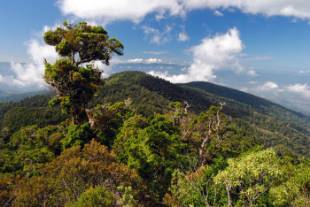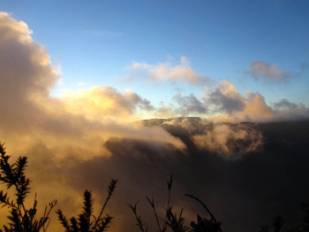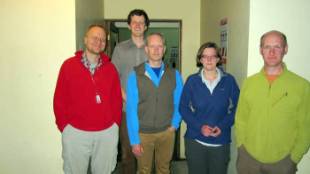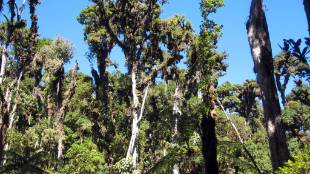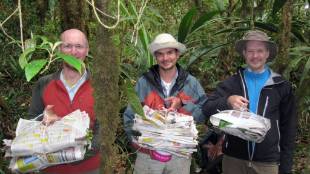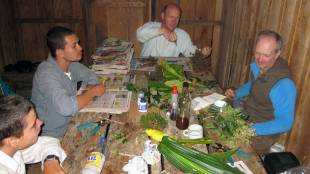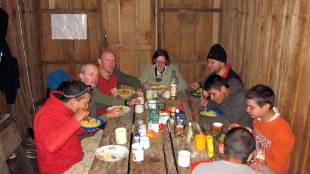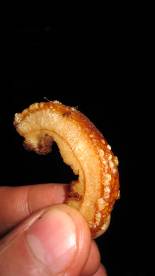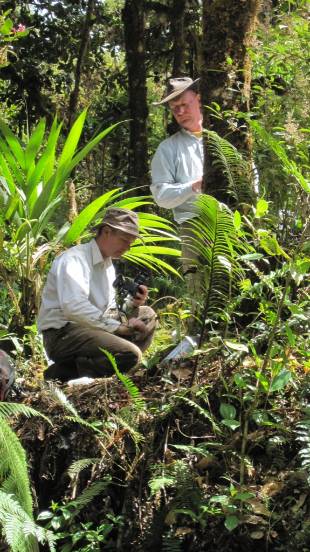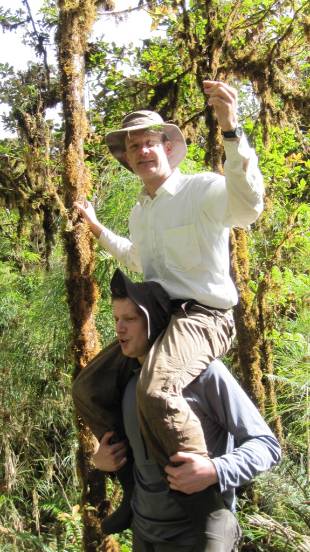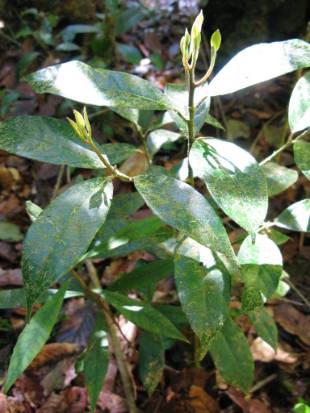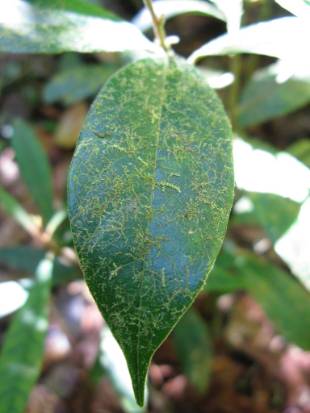The trip to Costa Rica is led by Dr. Alex Monro who has his own blog where you can learn about his interests and research. But here is some information about the other scientists, and their expectations for the trip:
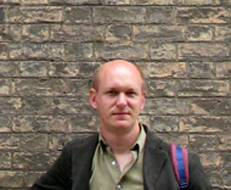
Dr. Neil Brummit is Researcher in Botanical Diversity
Area of Botany you’re most interested in
My main botanical interest has always been in biogeography - working out why some distant areas of the world have the same plants, while other areas close to each other have different plants. Also, I study why some areas of the world have so many more plant species than other areas do, and try to identify these areas and the threatened species they contain accurately enough to help with plans for their conservation.
Best thing about being a Botanist
When you can see that your work has been useful to someone else, especially someone outside of botany, it gives you a sense that your efforts have been worthwhile. For example, a big project that I have been involved in for several years has estimated how many plant species worldwide are threatened with extinction, and when we announced results from this project in 2010, it was covered in hundreds of media outlets around the world and we also travelled to the Conference of the Parties to the Convention on Biological Diversity meeting in Nagoya, Japan, to make a presentation there. At the end of the meeting there was a renewed determination by the world's governments to take positive conservation actions in the next few years, and I did feel that, in our own small way, we were a part of the scientific response to the loss of global biodiversity that had helped to galvanise the political will to make that happen.
Previous field work
A little bit of everywhere; I´ve done fieldwork on each continent, but I´m always keen to visit new places. For me there is always something special about being in Africa, perhaps because that was my first experience in the tropics. I think once you´ve been collecting in the tropics, everywhere else seems a bit boring by comparison. I was still at school when I first went on a proper field trip, to Malawi with my father (who is also a botanist); I loved it, and remember thinking that he was paid to do this!
Favourite thing about working in the field
Seeing new plants, and thinking to myself "Wow, what on earth is that?". If I can attempt an identification that is somewhere close to what it is, even better.
Least favourite thing about working in the field
Leeches and mosquitos; Listening to rats running around you in the dark when you are trying to sleep at night; Never being clean; Missing being at home with my wife;
What are your hopes for this trip?
Hopefully I will have the opportunity for more fieldwork in Costa Rica, so for me this is a chance to experience the country but, perhaps more importantly, get to know the people working there and start to build relationships with them. I´m grateful to be going with someone like Alex who has already had a lot of experience there, and I´m looking forward to working in the field with him.
What one piece of advice would you give someone going on field work for the first time?
It´s hard work! Don´t expect too much, as all the best laid plans can go out of the window very quickly; be prepared to adapt.
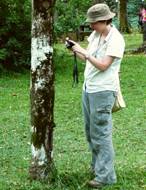 Jo Wilbraham is Senior Curator, Algae
Jo Wilbraham is Senior Curator, Algae
Area of Botany you’re most interested in
Non-flowering / cryptogamic plants, particularly bryophytes
Best thing about being a Botanist / Curator
Being able to spend time obsessing about your favourite plant group as part of your ‘proper job’ and being able to work with the wonderful collections here at the Natural History Museum.
Previous field work
My more recent fieldwork has been around the beautiful British coastline looking at seaweeds. I’ve also been on fieldwork trips to Reunion Island, Ecuador, Belize and Sulawesi, so Central America is new territory for me.
Favourite thing about working in the field
Exciting times looking for plants (and no access to work email).
Least favourite thing about working in the field
Sharing a camping hut with vampire bats wasn’t very nice, but mostly I’d say missing the folks back home.
What are your hopes for this trip?
My underlying goal is to contribute more data to the question ‘what grows where’, hopefully increasing knowledge of rare / poorly understood species and the habitats they live in. I will be collecting specimens for long term preservation in the NHM herbarium where they will be available to researchers around the world who are studying these groups – both now and in the future!
What one piece of advice would you give someone going on field work for the first time?
Remember to pack your sense of humour… and a hand lens!
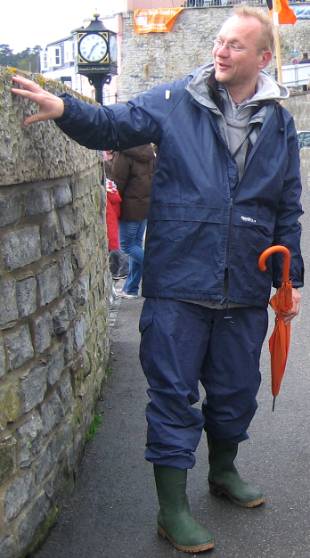 Dr. Holger Thues is Curator – Lichens
Dr. Holger Thues is Curator – Lichens
Area of Botany you’re most interested in
All the oddities traditionally studied by botanists but which are in fact not related to plants (eg. fungi, slime-molds etc.). Within “Green Botany” my current main interest is in lichenised algae (photosynthetic symbiotic partners in lichens) and particularly their compatibility with various lichens in different habitats.
Best thing about being a Botanist
I regard myself as a biologist. In my current role as curator at the NHM my focus is on lichenised fungi and their associated algae – this makes me a part mycologist / part botanist. Before I came to the NHM I was working partly as a researcher and partly as an environmental consultant. This included work with lichens, mosses and seed plants but also with various animal groups: from aquatic invertebrates, leafhoppers to hamsters and salmon. I like the constant change of the profession “biologist” - although the fundamental questions have remained surprisingly similar over thousands of years: from the stone age to the time of worldwide industrialisation: biologists always look for answers to the questions: what to eat (and what not?) what is harmful? what is beneficial? And what does it all mean in a wider context? I can hardly imagine a more interesting profession!
Previous field work
Mostly all over Europe (particularly “rocky” habitats from coastal cliffs to alpine peaks – you can easily locate me in the field by the sound of my chisel). In the tropics so far two field trips to the Venezuelan part of the Andes (focussed on freshwater habitats in open areas with Paramo-vegetation).
Favourite thing about working in the field
Asking questions directly to the living organism in its environment, physical activity, absence of paperwork
Least favourite thing about working in the field
Travelling to the study sites, paperwork in advance of a field trip
What are your hopes for this trip?
As a curator my main hope is to collect a rich selection of fresh lichen material from little studied habitats and poorly known taxonomic groups which will become a relevant resource for further studies by researchers in Costa Rica, at our museum and for other collaborators across the world.
One personal research focus for me will be a comparison of the freshwater lichens in the Talamanca Mountains with those in streams of other tropical and temperate areas. For temperate areas lichens were shown to be valuable indicators of water level fluctuations and stream bed stability, but we still know to little on the species diversity and the distribution patterns of freshwater lichens in the tropics to make them useful tools for the assessment of streams in these areas as well.
A second area of interest is an assessment of the lichen diversity on rock outcrops and the light rich and open Paramo-vegetation at the highest elevations of the Talamanca Mountains. These habitat types cover huge areas in the South American Andes but occur in relative isolation and at a much smaller scale in Costa Rica, separated by large densely forested areas. Together with my research colleague Cecile Gueidan we want to find out how this isolation affects the diversity of lichens. This habitat type is also likely to be among the first to be affected by climate change.
What one piece of advice would you give someone going on field work for the first time?
Try to get in contact with local people, appreciate and follow their advice.



